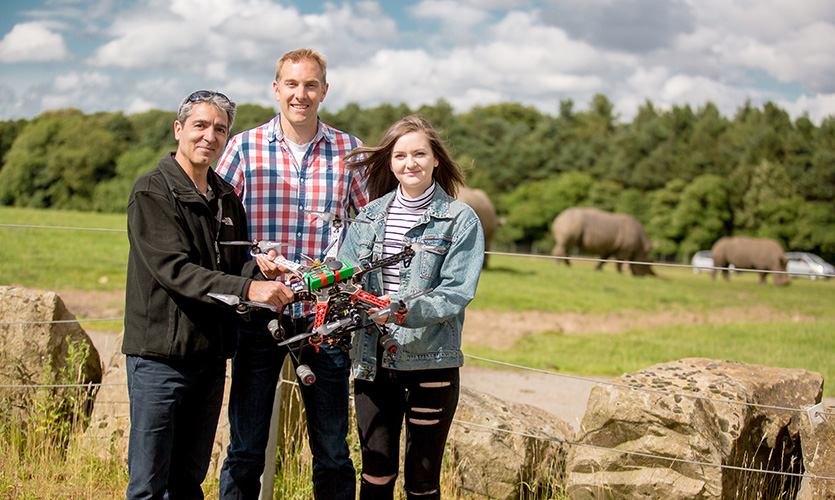Drones to the rescue: wildlife park footage will help save endangered animals
Drones to the rescue: wildlife park footage will help save endangered animals
Probably not your typical commuter chit-chat but when neighbours Serge Wich, an LJMU primatologist, and Steven Longmore, an astrophysicist at ARI, got talking on the train to work one day they realised by joining forces they could develop an innovative solution to help protect endangered wildlife.
By combining drone technology, used by conservationists, and thermal imaging cameras, used by astronomers, they are able to detect and classify the heat signatures of animals. The team are capturing the unique thermal profiles of rhinos, baboons and other residents of Knowsley Safari Park to build up a library of signatures. By accessing this library, researchers around the world will have an easier job of classifying, tracking and monitoring endangered species in the wild.
Not only useful to researchers, the combined technology can also help wildlife rangers prevent poaching while making their jobs less dangerous. This same technology can be applied in search and rescue operations and as a way for farmers in developing countries to track their livestock.
According to the WWF, there has been an 8,900% increase in rhino poaching in South Africa since 2007.
The project is a first for cross disciplinary collaboration between astronomy and ecology departments in a university and is proving mutually beneficial. Not only is it helping conservation research, it is also allowing astrophysics students to discover a more practical side of their degree.
If you’re interested in conserving wildlife and how drones are used in conservation, why not find out about the courses available at LJMU? Is astronomy more your thing? Then take a look at courses available within the Astrophysics Research Institute.
Part of this research is funded by the Science and Technology Facilities Council (opens in a new tab).



